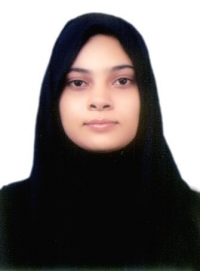Hafsa received her BSc degree in Electrical Engineering from University of Engineering and Technology Taxila, Pakistan in 2016 and MS degree (President’s Gold Medal) in Electrical Engineering from National University of Sciences and Technology, Pakistan in 2018. She worked as a Research Assistant in Centre for Advanced Research in Engineering (CARE), Pakistan (2017) and got an experience on FPGA. Her research interests include signal processing techniques, estimation and detection methods, Internet of Things and Cognitive Radios. She is currently a PhD candidate and involved in the JD ICE programme.
Hafsa Iqbal
Additional Info
- Project title: Transfer learning of decision capabilities between human drivers and autonomous vehicles
-
Research project:
An autonomous vehicle is capable of sensing its surrounding environment and navigating without human input. There are 5 different levels of autonomous cars. As the level of automation increases, the role of the driver shifts from active control of the vehicle, to monitoring, to limited or no involvement in the driving task.
Autonomous vehicles will change our lives in many ways. Drivers can use their time in a car to use the internet, read, work, eat, or sleep. Autonomous vehicles can provide transportation for those who cannot drive themselves. An autonomous car can take someone to work and then return home by itself to take children to school. In urban areas, if an autonomous car can be summoned when wanted, there will be little need for individuals to own a car. Congestions will decrease; far less parking will be needed; land use patterns likely would change.Transfer learning can be categorized under three sub-categories, i.e., inductive, transductive and unsupervised transfer learning, based on different situations between the source and target domains and tasks. Transfer learning can be applied to various tasks such as classifications, feature selection, object detection, visual tracking, pedestrian detection, and etc. It has had many applications in autonomous vehicles, too. Transfer learning can be efficiently used to perform high-quality prediction of self-driving car steering angles based on images using different deep learning techniques. The power of transfer learning is used for autonomous cars to test the direct perception approach by fine-tuning a standard AlexNet architecture pre-trained using ImageNet data.
- E-mail:
- Primary Supervisor(s): Carlo Regazzoni, Lucio Marcenaro
- Secondary Supervisor(s): David Martin Gomes
- PhD cycle: XXXIV

